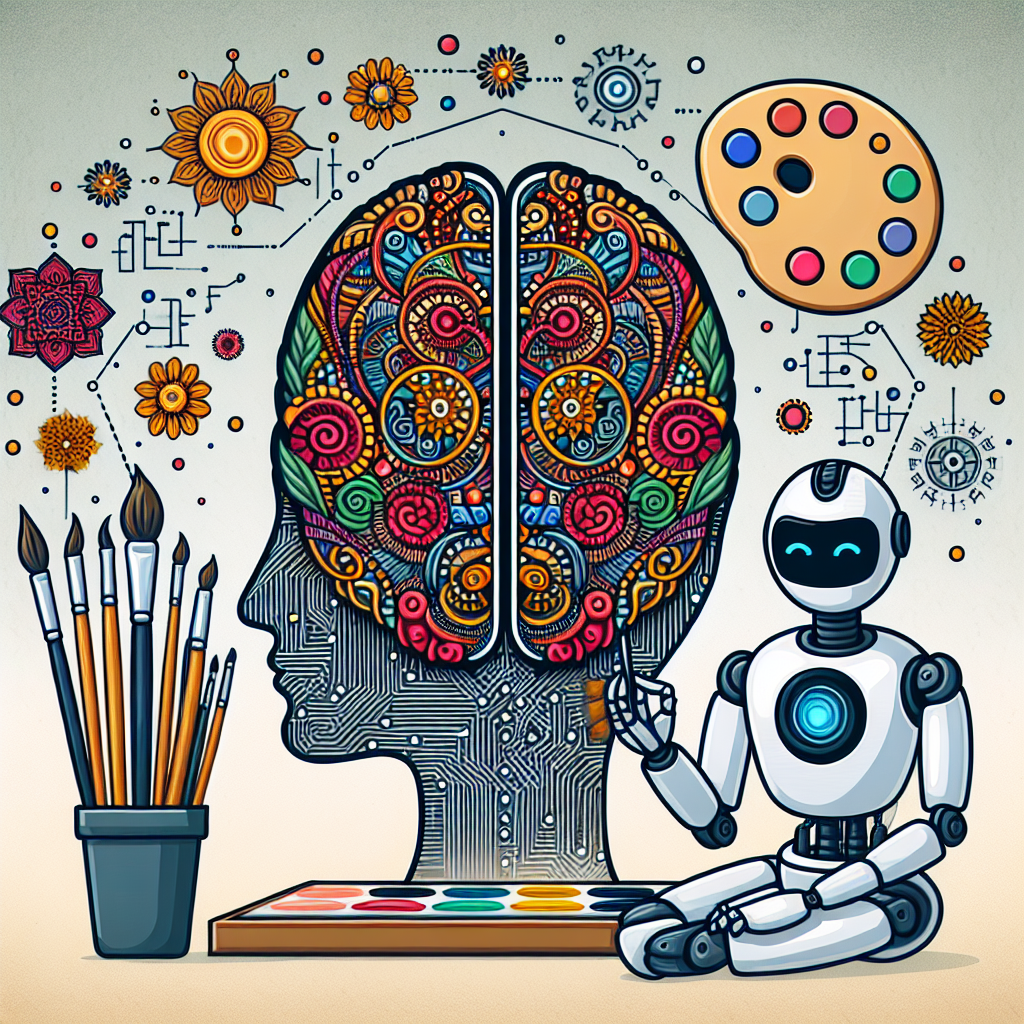Artificial Intelligence (AI) has been making waves across various industries, from healthcare to finance, and now it is also being utilized in the field of mental health through creative therapy. Creative therapy is a form of therapy that uses artistic expression to help individuals explore their emotions, reduce stress, and improve their overall mental well-being. By combining the power of AI with creative therapy, mental health professionals are able to enhance the therapeutic experience for their clients and provide more personalized and effective treatment.
AI in Creative Therapy
AI technology has the ability to analyze and interpret various forms of art, such as paintings, music, and poetry, in order to gain insights into the emotions and mental state of the artist. This can be particularly useful in creative therapy, where the goal is to help individuals express and understand their emotions through artistic expression. By using AI to analyze the art created by their clients, therapists can gain a better understanding of their clients’ emotions and mental health issues, and tailor their therapy sessions accordingly.
One way in which AI is being used in creative therapy is through the creation of virtual reality (VR) environments that allow individuals to explore and interact with different artistic mediums. These VR environments can be used as a form of art therapy, where individuals can create and manipulate art in a virtual space, allowing them to express themselves in a new and unique way. AI algorithms can also be used to analyze the art created in these VR environments, providing therapists with valuable insights into their clients’ emotions and mental well-being.
Another way in which AI is being utilized in creative therapy is through the development of AI-powered tools that can help individuals create art more easily and effectively. For example, there are AI-powered drawing and painting tools that can assist individuals in creating art by providing suggestions and guidance on techniques and styles. These tools can be particularly helpful for individuals who may struggle with traditional art mediums but still want to engage in creative therapy.
Benefits of AI in Creative Therapy
The integration of AI technology in creative therapy offers a number of benefits for both therapists and clients. Some of the key benefits include:
1. Personalized treatment: AI algorithms can analyze the art created by clients and provide therapists with valuable insights into their emotions and mental health issues. This allows therapists to tailor their treatment plans to the specific needs of each individual, leading to more personalized and effective therapy sessions.
2. Increased accessibility: AI-powered tools and VR environments make it easier for individuals to engage in creative therapy, regardless of their artistic abilities or physical limitations. This increased accessibility allows more individuals to benefit from the therapeutic effects of artistic expression.
3. Enhanced creativity: AI-powered tools can help individuals explore new artistic techniques and styles, leading to increased creativity and self-expression. This can be particularly beneficial for individuals who may feel stuck or uninspired in their artistic endeavors.
4. Improved outcomes: By combining the power of AI with creative therapy, therapists can achieve better outcomes for their clients, including reduced stress, improved emotional well-being, and enhanced self-awareness.
FAQs
Q: How does AI analyze art in creative therapy?
A: AI algorithms can analyze various aspects of art, such as color, composition, and style, in order to gain insights into the emotions and mental state of the artist. This analysis can help therapists better understand their clients’ emotions and tailor their therapy sessions accordingly.
Q: Can AI-powered tools replace human therapists in creative therapy?
A: While AI-powered tools can enhance the therapeutic experience in creative therapy, they cannot replace the human connection and empathy that therapists provide. Human therapists play a crucial role in guiding and supporting individuals through their creative therapy journey.
Q: Are there any ethical concerns surrounding the use of AI in creative therapy?
A: As with any use of AI technology, there are ethical concerns to consider when using AI in creative therapy. These concerns may include issues related to privacy, data security, and the potential for bias in AI algorithms. It is important for therapists to be mindful of these ethical considerations and ensure that they are using AI technology responsibly and ethically.
In conclusion, the integration of AI technology in creative therapy has the potential to revolutionize the field of mental health by providing more personalized and effective treatment options for individuals. By combining the power of AI with artistic expression, therapists can help individuals explore their emotions, reduce stress, and improve their overall mental well-being. As AI technology continues to advance, the possibilities for using AI in creative therapy are endless, and the benefits for individuals seeking mental health support are profound.

